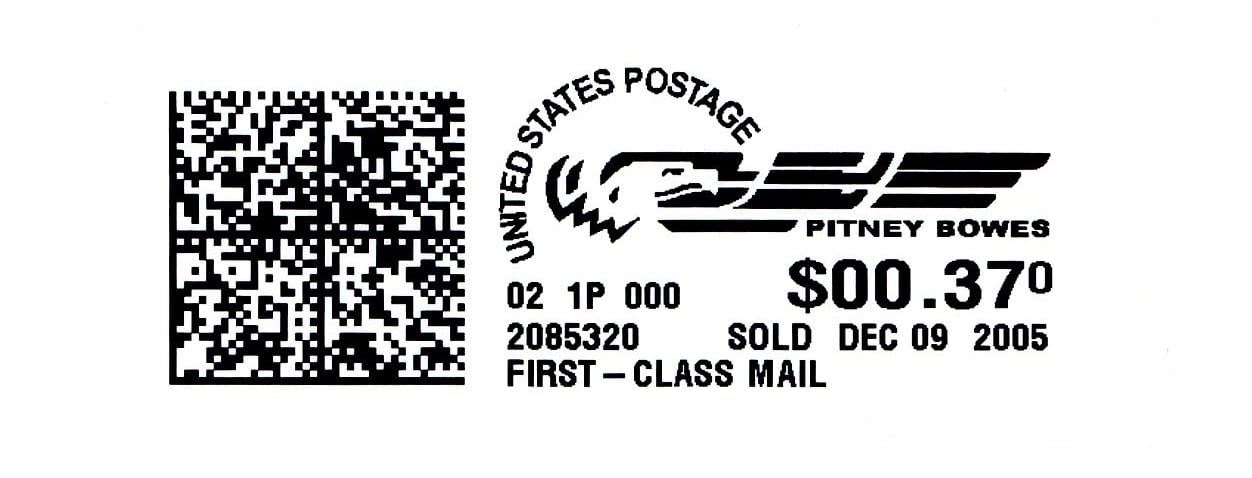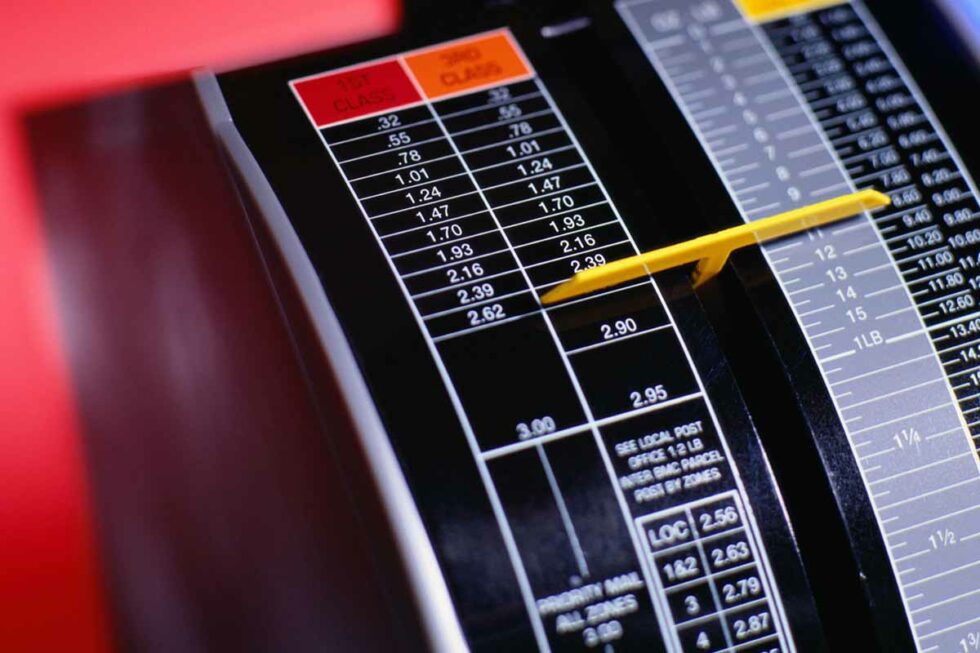What is metered mail vs stamped mail? This seemingly simple question opens a door to a world of postal efficiency and cost considerations. Understanding the differences between these two mailing methods is crucial for individuals and businesses alike, impacting everything from personal correspondence to large-scale marketing campaigns. We’ll explore the distinct characteristics, cost implications, and practical applications of each, empowering you to make informed choices for your mailing needs.
This guide will delve into the core differences between metered and stamped mail, covering postage costs, mailing procedures, suitable use cases, the technology behind metered mail, and even the environmental impact of each method. By the end, you’ll be equipped to choose the most efficient and cost-effective mailing solution for your specific circumstances.
Definition and Differences: What Is Metered Mail Vs Stamped Mail

Metered mail and stamped mail represent two distinct methods of paying for postage, each with its own advantages and disadvantages. Understanding the core differences is crucial for businesses and individuals seeking efficient and cost-effective mailing solutions. This section will clarify the key distinctions between these two common postage options.Metered mail utilizes a postage meter, a specialized machine that prints postage directly onto the mailpiece.
This eliminates the need for individual stamps. Stamped mail, conversely, relies on the traditional adhesive postage stamps affixed to the envelope or package. The fundamental difference lies in the method of postage application and the overall process involved.
Metered Mail Characteristics
Metered mail is a system where postage is applied using a postage meter. This machine, usually leased from a postal service provider, prints a postage indicia directly onto the envelope or package. The indicia includes the amount of postage paid, the meter number, and sometimes a date. Metered mail often offers advantages in terms of speed and efficiency, particularly for high-volume mailers.
The postage meter itself manages the postage account, ensuring accurate tracking and payment. Businesses often prefer metered mail for its streamlined process and potential cost savings on large mailings.
Stamped Mail Characteristics
Stamped mail involves the use of adhesive postage stamps to pay for the mailing of letters, postcards, and packages. The stamps are purchased from authorized vendors, typically post offices or authorized retailers, and affixed manually to the mailpiece. Each stamp represents a specific denomination of postage, which is clearly indicated on the stamp itself. Stamped mail remains a popular option for individuals and small businesses sending occasional mail, primarily due to its simplicity and accessibility.
The process is straightforward, requiring no specialized equipment beyond the stamps themselves.
Postage Application Methods
The application of postage dramatically differs between these two methods. Metered mail employs a postage meter, a machine that prints the postage directly onto the mailpiece, providing a precise and efficient method, especially beneficial for high-volume mailers. Conversely, stamped mail necessitates the manual application of adhesive stamps, a process that is time-consuming and less efficient for larger quantities of mail.
The choice between these methods often hinges on the volume of mail being sent and the resources available to the sender. A small business sending a few letters a week might find stamped mail perfectly adequate, whereas a large corporation sending thousands of pieces daily would undoubtedly benefit from the efficiency of a postage meter.
Postage Costs and Calculations
Understanding the cost differences between metered and stamped mail is crucial for efficient budget management, especially for businesses handling high mail volumes. Factors such as weight, size, and destination significantly influence the final postage price, regardless of the mailing method. This section will detail the cost calculation for both metered and stamped mail, highlighting potential savings and added expenses.
Metered Mail Postage Costs
Several factors determine the cost of metered mail. The most significant is the weight of the mailpiece. Heavier items naturally cost more to transport. Beyond weight, dimensions also play a role; oversized envelopes or packages will attract higher postage rates. The destination of the mail significantly impacts cost; sending a letter across the country will generally be more expensive than sending it across town.
Finally, the class of mail (First-Class, Priority, etc.) directly influences the price. Each class has its own rate structure based on weight and distance. Using a postage meter often offers discounts compared to purchasing individual stamps, especially for businesses sending many pieces of mail.
Stamped Mail Postage Costs
Calculating postage costs for stamped mail is relatively straightforward. The United States Postal Service (USPS) publishes a rate chart detailing the cost based on the weight of the letter or package and the mail class. For standard letters, the cost is typically fixed for a specific weight range (e.g., a single ounce). Exceeding the weight limit necessitates additional stamps to cover the extra weight.
The calculation is simple: determine the weight of the mailpiece, find the corresponding rate on the USPS chart, and purchase the necessary stamps. No discounts are generally offered for bulk purchases of individual stamps.
Cost Comparison: Metered vs. Stamped Mail
The following table compares the cost of sending a standard letter using both metered and stamped mail. These figures are illustrative and may vary based on current USPS rates and potential discounts offered by metered mail services.
| Mail Type | Weight (ounces) | Postage Cost (USD) | Notes |
|---|---|---|---|
| Stamped Mail | 1 | $0.66 | Based on current USPS First-Class Mail rate for a standard letter. |
| Metered Mail | 1 | $0.60 | Illustrative price reflecting a potential discount for using a postage meter. Actual savings may vary. |
| Stamped Mail | 3 | $1.32 | Illustrative price, assuming $0.66 per ounce. Actual cost may vary slightly depending on USPS rates. |
| Metered Mail | 3 | $1.20 | Illustrative price reflecting a potential discount for using a postage meter and assuming a proportional discount per ounce. |
Cost Savings and Increased Expenses
Metered mail often presents cost savings, particularly for high-volume mailers. The discounts offered by postage meter providers can significantly reduce overall postage expenses. However, the initial investment in a postage meter can be substantial. Stamped mail, while simpler for low-volume mailers, can become expensive for businesses sending numerous items daily. The lack of bulk discounts for stamps offsets any perceived convenience.
The choice between metered and stamped mail should consider the volume of mail sent and the budget allocated for postage.
Mailing Procedures and Requirements
Preparing your mail correctly is crucial for ensuring timely and efficient delivery, regardless of whether you’re using metered postage or stamps. Understanding the specific procedures and requirements for each method will save you time and potential headaches. Let’s delve into the specifics.
Metered Mail Preparation
Metered mail requires using a postage meter machine to apply postage directly onto your mailpieces. This process streamlines the mailing process for high-volume senders. The steps involved are relatively straightforward, but precision is key to avoid delays or rejection.
- Acquire a Postage Meter: You’ll need to purchase or lease a postage meter machine from a provider like Pitney Bowes or FP Mailing Solutions. These machines vary in size and functionality depending on your mailing volume.
- Print Postage: Once your meter is set up and funded, you can print postage directly onto your envelopes or packages. This usually involves feeding the mailpiece into the machine, selecting the appropriate postage amount, and pressing a button.
- Apply Meter Impression: The postage meter will print a postage impression that includes the amount of postage, the meter number, and the date. This impression acts as proof of postage payment.
- Sort and Bundle Mail: After applying postage, sort your mail by class (First-Class Mail, Marketing Mail, etc.) and bundle it appropriately for efficient processing by the postal service. This may involve using trays or other sorting aids.
- Submit to Postal Service: Finally, deposit your metered mail at your nearest post office or authorized collection box. For high-volume mailers, you may arrange for postal service pickup.
Stamped Mail Preparation
Using postage stamps is the traditional method of paying for postage, suitable for smaller mailing volumes. While seemingly simple, proper preparation is essential for successful delivery.
- Affix Stamps: Select the correct stamps based on the weight and destination of your mailpiece. Ensure the stamps are firmly affixed to the upper right-hand corner of the envelope or package. Use a damp sponge or moistened adhesive if necessary to ensure proper adhesion.
- Address Clearly: Write the recipient’s full address legibly, including the street address, city, state, and ZIP code. Ensure the address is easily readable and not obscured by any other markings.
- Return Address: Include your return address in the upper left-hand corner. This helps ensure the mailpiece is returned to you if it cannot be delivered.
- Sort and Bundle (Optional): While not strictly required for small mailings, sorting and bundling your stamped mail can help streamline the postal service’s processing.
- Deposit Mail: Deposit your stamped mail at your nearest post office, authorized collection box, or hand it to your mail carrier.
Comparison of Mailing Procedures
The primary difference lies in the method of applying postage. Metered mail uses a machine for automated postage application, ideal for high-volume mailings, while stamped mail requires manually affixing stamps, better suited for smaller quantities. Metered mail often offers better tracking and reporting capabilities. Both methods require accurate addressing and adherence to postal regulations regarding mail class and acceptable packaging.
Specific Requirements and Regulations
Both metered and stamped mail must adhere to USPS regulations concerning mail class, size, weight, and prohibited items. These regulations are extensive and can vary depending on the type of mail. For instance, certain items might require additional postage or specific packaging. Consulting the USPS website or contacting your local post office for detailed information is always recommended before mailing any item.
Failure to comply with these regulations can result in delays, additional fees, or even non-delivery.
Suitable Use Cases
Choosing between metered and stamped mail depends heavily on your mailing needs and volume. Understanding the strengths of each method allows for efficient and cost-effective postage. The following scenarios illustrate when each option shines.
The selection between metered and stamped mail hinges on several factors, primarily volume and the nature of the correspondence. High-volume mailings often benefit from the efficiencies of metered mail, while personal correspondence generally favors the simplicity of stamps.
Metered Mail: Ideal Scenarios
Metered mail offers significant advantages for businesses and organizations sending large quantities of mail. Its efficiency and cost savings become increasingly pronounced with higher volumes.
- Bulk Mailings: Newsletters, marketing materials, invoices, and other mass mailings benefit greatly from the speed and cost-effectiveness of metered mail.
- Direct Mail Campaigns: Large-scale marketing campaigns targeting specific demographics or geographic areas can leverage metered mail for optimal efficiency and cost control.
- Internal Communications: Businesses with multiple locations often use metered mail for internal communications, such as memos, reports, or company updates.
- Bill Payments: Companies sending out large numbers of bills or payment reminders find metered mail to be a more streamlined and cost-effective solution than individual stamps.
- Transaction Processing: Any situation requiring the sending of a large number of similar documents, such as bank statements or insurance confirmations, benefits from metered mail.
Stamped Mail: Ideal Scenarios
While metered mail excels in high-volume situations, stamped mail remains a practical and convenient choice for various personal and small-business needs.
- Personal Letters and Cards: Sending personal correspondence, such as birthday cards, thank-you notes, or letters to friends and family, is best suited to stamped mail.
- Small Business Mailings: Small businesses sending out a limited number of invoices, marketing materials, or other documents may find stamped mail to be a simpler and more cost-effective option, especially if their volume doesn’t justify the investment in a postage meter.
- Special Occasion Mail: For items requiring special handling or delivery, such as wedding invitations or important legal documents, the visual appeal and perceived value of a stamp might be preferable.
- Individualized Correspondence: When personalization is crucial and each mailing requires unique handling or addressing, stamped mail offers greater flexibility.
Advantages and Disadvantages of Metered Mail for Large-Scale Mailings
Metered mail, while efficient, presents both advantages and disadvantages for large-scale mailings.
Advantages: Reduced postage costs (especially for significant volumes), increased speed and efficiency through automation, improved accuracy in addressing and postage application, and simplified accounting for postage expenses.
Disadvantages: Requires an initial investment in a postage meter, potential for technical malfunctions, and the need for specialized training to operate the equipment. Furthermore, a large upfront investment might not be feasible for smaller businesses or organizations with infrequent large mailings.
Advantages and Disadvantages of Stamped Mail for Personal Correspondence
Stamped mail remains a popular choice for personal use, offering both benefits and drawbacks.
Advantages: Simplicity and convenience – no special equipment is needed. The personal touch of a stamp adds a certain charm to correspondence, and it’s readily accessible at various retail locations.
Disadvantages: Can be more expensive than metered mail for large volumes, time-consuming for affixing stamps to many items, and prone to errors in postage application if done manually. Additionally, it lacks the automation and tracking capabilities of metered mail.
Metered Mail Equipment and Technology

Metering machines represent a significant advancement in mail processing, offering efficiency and cost-effectiveness compared to traditional stamped mail. These devices automate the process of applying postage, eliminating the need for manual affixing of stamps and streamlining the mailing process for businesses of all sizes. Understanding the technology behind these machines is crucial for businesses seeking to optimize their mailing operations.Metered mail equipment encompasses a range of technologies, from basic desktop models to sophisticated high-volume systems.
The choice of equipment depends on factors like mailing volume, budget, and desired features.
Types of Metering Machines
Several types of postage metering machines cater to diverse mailing needs. Small businesses often opt for compact desktop models, while larger organizations may utilize larger, more powerful machines capable of processing high volumes of mail. Some machines are designed for specific mail types, like large envelopes or parcels. Advanced models may include features like digital scales for accurate weight measurement and integrated address verification systems.
The selection process involves considering factors like the volume of mail processed daily, budget limitations, and the desired level of automation.
Obtaining a Postage Meter and Associated Costs
Acquiring a postage meter typically involves contacting a postage meter provider, such as Pitney Bowes or Francotyp-Postalia. These companies offer various models with different functionalities and price points. The initial purchase cost varies greatly depending on the machine’s features and capacity. Beyond the initial purchase, ongoing costs include meter rental fees (often included in lease agreements), postage itself, and potential maintenance or service contracts.
Businesses should carefully assess their mailing volume and budget to choose a suitable model and payment plan. For example, a small business with low mailing volume might opt for a less expensive, entry-level model with a monthly rental fee, while a large corporation might invest in a high-volume machine with a longer-term lease agreement.
Technological Aspects of Metered Mail Processing
Metered mail processing leverages several technologies to ensure accuracy and efficiency. Modern postage meters use sophisticated internal mechanisms to precisely print postage indicia onto mailpieces. This often includes a digital scale for accurate weight determination, which is essential for calculating the correct postage amount. Many meters also incorporate connectivity features, allowing for remote meter replenishment and real-time tracking of postage usage.
Integrated databases allow for address verification and other data management functions, improving mailing accuracy and reducing the likelihood of returned mail. The meters often employ sophisticated algorithms to calculate postage based on weight, dimensions, and destination. Security features are integrated to prevent fraud and ensure the integrity of the postage applied.
Functionality of a Postage Meter
A typical postage meter comprises several key components working in concert. A digital display shows the available postage balance, allowing users to monitor usage. A keyboard or touchscreen interface allows for inputting mailing information and selecting postage options. An internal mechanism prints the postage indicia, which includes the postage amount, meter number, and date. A built-in scale measures the weight of mailpieces, ensuring accurate postage calculation.
Some meters offer additional features such as address verification, allowing for improved mailing accuracy. The operational process involves loading the meter with funds, selecting the postage amount based on the weight and destination of the mailpiece, printing the postage indicia on the mailpiece, and finally, dispensing the mailpiece. The entire process is designed for speed and efficiency, reducing the time and effort required to prepare mail for dispatch.
Environmental Impact

Metered and stamped mail, while seemingly similar in function, diverge significantly in their environmental footprints. Understanding these differences is crucial for businesses and individuals aiming to minimize their environmental impact through responsible mail practices. Factors such as material sourcing, manufacturing processes, transportation methods, and end-of-life management all contribute to the overall environmental burden.The environmental impact of metered mail versus stamped mail is multifaceted, encompassing resource consumption, energy use, and greenhouse gas emissions.
A comprehensive comparison requires analyzing each stage of the mailing process, from material production to final disposal. This analysis reveals subtle but significant differences in the overall environmental footprint of each method.
Recycled Material Usage
Both metered and stamped mail utilize paper, the primary source of environmental concern. The extent of recycled content varies depending on the postal service and the specific paper stock used. While many postal services actively promote the use of recycled paper, the percentage of post-consumer recycled fiber can fluctuate. For example, some postal services may mandate a minimum percentage of recycled content for their official mail stock, while others may rely on market availability and cost considerations.
Metered mail users often have more control over their paper choices, allowing for a higher incorporation of recycled materials if they choose to source their envelopes and paper from sustainable suppliers. However, stamped mail relies on the postal service’s standardized paper stock, which may or may not prioritize recycled content to the same extent.
Carbon Emissions Associated with Mailing Methods
Carbon emissions associated with metered and stamped mail stem primarily from paper production, printing, transportation, and waste management. The manufacturing of paper, a resource-intensive process, generates significant greenhouse gas emissions. Transportation, encompassing the movement of mail from origin to destination, also contributes substantially. The distance traveled and the mode of transportation (truck, train, air) significantly impact carbon emissions.
Furthermore, the energy used in printing and the waste generated from discarded mail contribute to the overall carbon footprint. While precise data varies based on geographic location and specific operational practices, studies consistently show that the overall carbon emissions for metered mail can be slightly lower than stamped mail due to potential efficiencies in printing and sorting processes.
This is largely due to the potential for bulk mailing using metered mail, optimizing transportation and reducing the overall number of individual mail pieces.
Visual Representation of Environmental Footprints, What is metered mail vs stamped mail
Imagine two bar graphs side-by-side. The first bar represents the environmental footprint of stamped mail, encompassing a larger area to represent higher emissions. This bar is segmented into sections representing paper production, printing, transportation, and waste disposal, with each section proportionally sized to its contribution to the total emissions. The second bar represents metered mail, visibly smaller to indicate lower emissions.
Its segments mirror those of the stamped mail bar, but each section is proportionally smaller, reflecting the reduced impact in each stage of the mailing process. The difference in bar height visually represents the overall reduction in environmental impact achieved through the use of metered mail. This visual representation highlights the relative differences in carbon footprint between the two mailing methods.
Note that this is a simplified representation and the actual difference in size may vary based on specific factors and data from different regions and time periods.
Choosing between metered and stamped mail ultimately depends on your mailing volume, budget, and the urgency of your correspondence. While stamped mail remains a convenient option for personal use, metered mail offers significant advantages for businesses and high-volume mailers. By carefully weighing the factors discussed, you can optimize your mailing strategy for maximum efficiency and cost savings, ensuring your messages reach their destination promptly and effectively.
Remember to consider the environmental impact as you make your decision.
Q&A
Can I use a postage meter for international mail?
Generally, no. Postage meters are primarily for domestic mail within a specific country. International mail requires different postage and customs procedures.
What happens if I use the wrong postage?
Your mail may be returned to sender or delivered with a postage due notice requiring the recipient to pay the balance before receiving it.
Are there different types of metered mail?
Yes, metered mail can be categorized based on class (First-Class, Marketing Mail, etc.) and the type of meter used. The options available depend on your mailing volume and the services offered by your postal service.
Can I get a refund for overpaid postage on metered mail?
It’s unlikely. However, you may be able to adjust your meter settings to prevent future overpayments.






